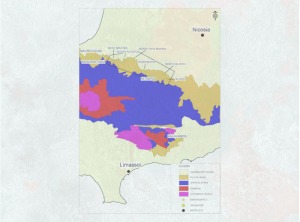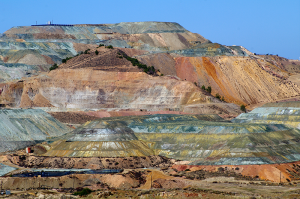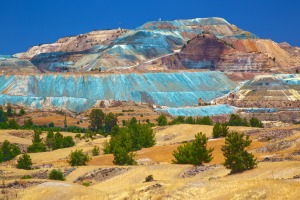The mineral resources of Cyprus included asbestos, clays, copper, gypsum, lime, marble, sand, stone, and umber, which is an iron and manganese oxide.
The name Cyprus is a derivative of Kúpros, which the Greeks called the island, and means Cuprous, synonymous with copper.
Copper extraction in Cyprus begun in 4000 BC and the people of ancient Cyprus were known for their metalworking skills.
Copper exploration in Cyprus was centered on the Troodos ophiolite complex. All of Cyprus’s copper deposits that had been identified as of 2012 were volcanic-hosted massive sulfide (VMS) deposits that were under shallow cover rocks.
Possibly the world’s oldest operational mine, the Skouriotissa copper mine, was founded in 1914 by the Cyprus Mines Corporation. During World War II copper mining was suspended, but then resumed until the 1974 Cypriot coup d’état. At the end of the conflict, the cease-fire demarcation line divided the holdings of the largest mining firm in the country, Cyprus Mines, causing their shut-down and sale to Hellenic Copper Mines Ltd. As a result of near complete extraction of copper and iron pyrite ore, and the expense of extracting the remaining low grade deposits companies which had resumed operations after the conflict operated on smaller scales. Falling international copper prices created a recession forcing the other companies to cease mining production entirely by 1979. In 1981, Hellenic Ltd. began recovering copper from leaching waste, ceased that production in 1993, but reopened mining operations at Skouriotissa in 1996.
Based on the often connection of the goddess to copper I decided that the Skouriotissa site will be more appropriate for the project.









